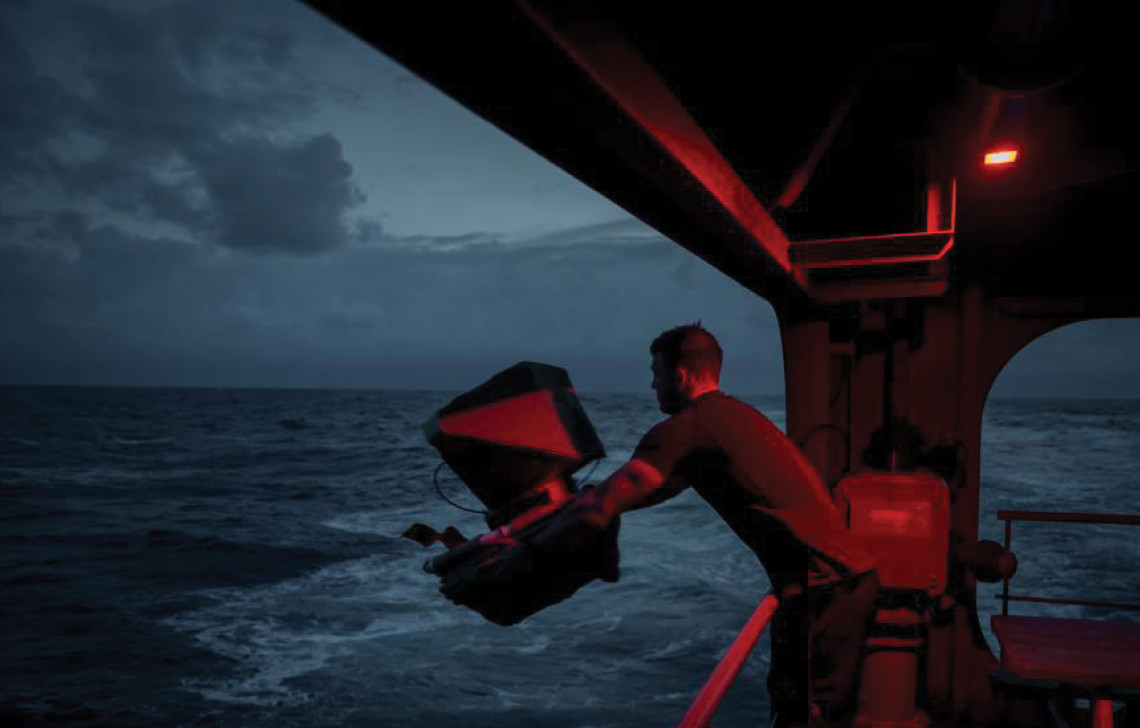
22 January 2025
The journey into Geelong is underway, and we have successfully deployed all seven of the Global Drifters, collecting three eDNA samples along the way.
Yesterday morning was especially busy. We were issued some of our polar gear, and then set off to gather our eDNA samples followed up with a polar medical briefing, had a quick lunch, and then tackled the polar survival circuit training. After that, we convened in the conference room for a Science Activities briefing led by DST. The Commanding Officer (CO) aka Captain—joined the session, along with several officers and crew members. It went off without a hitch, and I think everyone came away with a better understanding of our goals and plans.
In the evenings, we found some time to unwind, with two movie nights in our small office, just with the DST team. We watched National Treasure and then Iron Man.
Last night brought another time zone shift. We’re using UTC for all the Global Drifter tasks, so it’s not an issue for our eDNA sampling schedule. But things might get tricky when more science activities require precise time tracking, as ship time isn’t synchronized with GPS time. We’ll have to work out a solution when the time comes.
The seas had been a bit rough in the past few days, and it made for a restless night’s sleep. We weren’t feeling seasick, but the motion of the ship had us sliding across our bunks or getting tossed into the air now and then. Thankfully, today the ship felt much more stable.
DST researcher and Navy student Oscar rallied the divers this morning, and together we moved all 20 SOFAR wave buoys from the container into the hanger. We also brought eight Global Drifters down to the seamanship store. These eight Drifters, along with the 17 wave buoys, will be deployed during our transit from Geelong to McMurdo. Some of the crew are eager to help throw them overboard when the time comes. Science partner Dr Peter McComb (Managing Director and Physical Oceanographer- Oceanum) also had the mooring ready and gathered the team to run through the deployment plan.
The crew couldn’t help but chuckle as we walked down the long corridor each day, carrying our jerry cans filled with seawater for the eDNA samples. We were using two filter kits daily, but things hadn’t gone as smoothly as expected. The pump we brought along made it easy to push one liter of water through the first filter, but when we connected the second one, it would block almost immediately, and water just wouldn’t pass through. Even using the syringe was tougher than it had been back in the lab. This happened for the first two days of eDNA sampling, and we were stumped.
After talking it through last night, we thought the issue might be that the filter was getting wet from residual water in the pump hoses before we even started the process. It seemed a bit odd since the water was going to be pumped through the filter anyway, but we decided to give it a shot. The next day, I drained the hoses after the first filter, then attached the second one. To our surprise, it worked perfectly, and we were able to pump one liter of water through without a hitch. We won’t question it—this is now our procedure, and it’s working well.
With each day, we’re learning and adapting, and despite the occasional hiccup, it feels like we’re making real progress. The journey ahead is still long, but we're ready for whatever comes next.
- Sara
